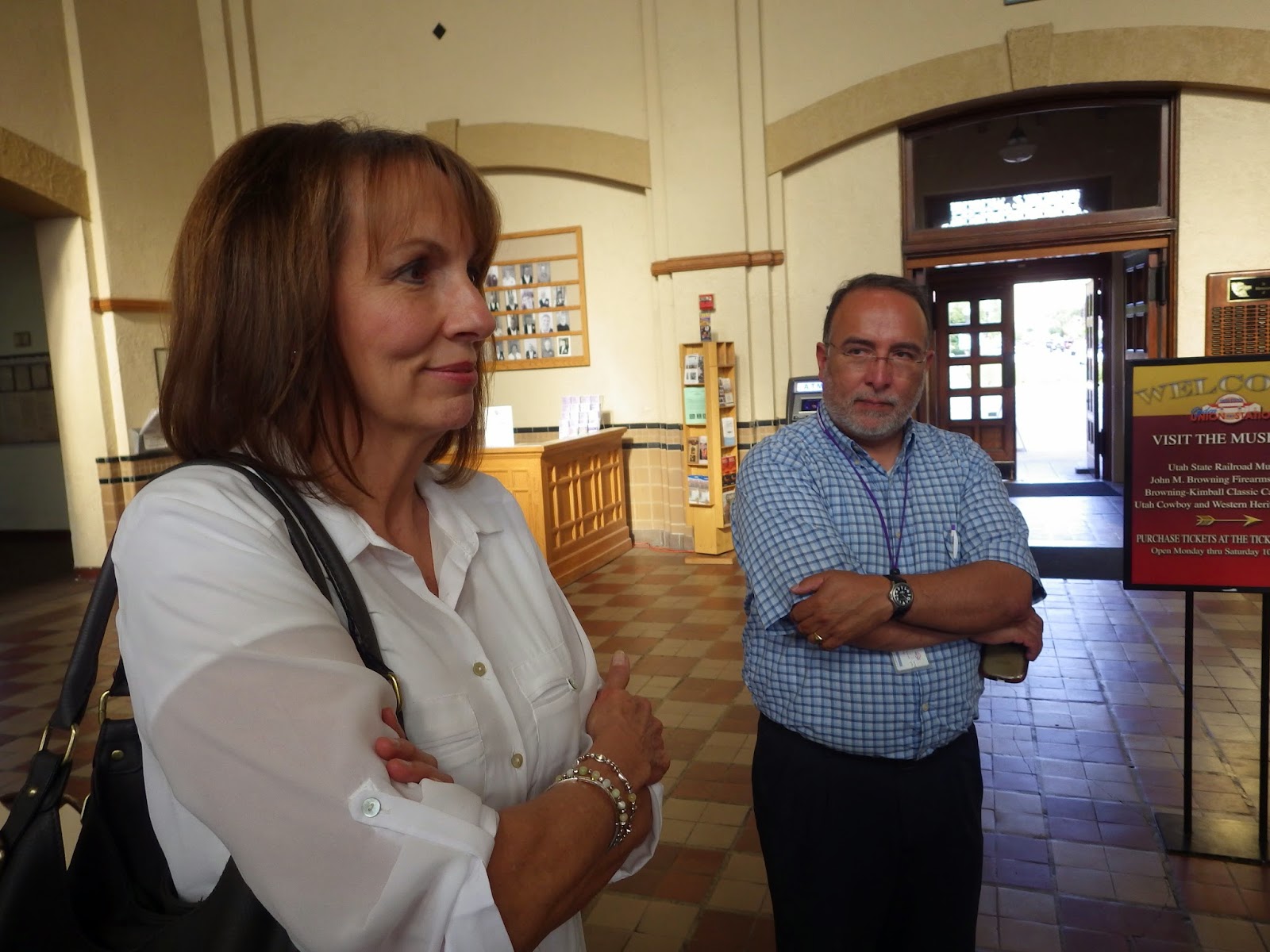 |
| Remains of Dec. 31, 1944 train wreck? |
I need to find sources, check witnesses, documents, and so on.
Do you know? Call me, please. Email summicron12000@yahoo.com.
Having that out of the way, I got a call from Weber County Sheriff's Lt. Mark Lowther a while back. Mark is a major train fan, also a major history fan. He said he thinks he's found wreckage from the New Year's Day, 1945, train wreck on the railroad causeway west of Ogden.
It was a horrible wreck.
 Sunday morning, Dec. 31, two sections of the Pacific Limited left Ogden, heading west. Two sections means they were both part of the same train, but pulled by individual engines, one train following the other.
Sunday morning, Dec. 31, two sections of the Pacific Limited left Ogden, heading west. Two sections means they were both part of the same train, but pulled by individual engines, one train following the other.The first section, 18 cars, mostly passenger cars, was held up by a slow-moving freight that had left the yards in front of it. When the freight developed trouble, it forced the Pacific Limited's first section, behind it, to stop and then proceed slowly.
And on came the second section, 20 cars full of express packages, mail and, reportedly, two cars full of explosives. This was in the day before computers, radio coordination of trains and electronic signals. The engineer on the second section, apparently unaware of the trouble ahead, plowed on at normal speed. He smashed right into the rear of the first section.
Initial reports were that 48 were killed, another 79 injured. When I interviewed some of the survivors 50 years later they said it was the most horrific experience imaginable.
The rear passenger car on the first section ended up on top of the ruptured engine of the second section. Steam from the engine boiled people alive. The Standard-Examiner reporter on the scene, Dorothy Porter, described a scene of carnage, bodies barely recognizable as such, wounded and dead intermixed amid the tangled wreckage.
 |
| Rusting train car truck |
Mark has to go out on that area on official duty at times, investigating whatever crimes take place. The Weber/Box Elder county line actually crosses the causeway just east of Promontory Point which is in Box Elder County. If there's a crime out on the point, Mark said, Box Elder deputies will usually drive down to Ogden and then west beside the rails to avoid having to drive all the way out to Promontory Summit, then down to the point.
 |
| Denver Post photo -- note angle of wrecked car in front and other car laid out parallel to the track to the right. This matches the layout of wreckage we saw today. |
The wreckage he found is on the south side of the tracks. There are the remains of at least one car, and the chassis of another. There's also random stuff -- railroad trucks and hunks of car frames here and there.
Interestingly, the way the debris is laid out looks a lot like an aerial view of the crash published in the Denver Post (left).
It's hard to imagine the railroad would leave hunks of that wreckage around all these years, but stranger things have happened. The war was still on, men and material to clean up wreckage sites was scarce, perhaps they just got the tracks cleared and made a mental note to come back later and clean up the rest.
And then never did? No clue.
The tracks were double then, according to news accounts,
and, at least in this area, are single now. Back then the only way to get to the site was on a rescue train, now there's a road on the north side of the single set of tracks.
and, at least in this area, are single now. Back then the only way to get to the site was on a rescue train, now there's a road on the north side of the single set of tracks.
 One argument that the railroad isn't what you'd call tidy can be found further west of Promontory Point. A couple of old tug boats, beached by the high water of 1986, are still there, still beached, also rusting away.
One argument that the railroad isn't what you'd call tidy can be found further west of Promontory Point. A couple of old tug boats, beached by the high water of 1986, are still there, still beached, also rusting away.  If they'll leave rusting old boats out there, why not hunks of car that aren't in the way? They've got a train to run, after all, not a beauty contest to win.
If they'll leave rusting old boats out there, why not hunks of car that aren't in the way? They've got a train to run, after all, not a beauty contest to win.
It's a lonely area to have a wreck. The lake is quiet, tinged with shades of blue on the south side and pink (from algae) on the north. Wide mud flats stretch between the causeway and Stansbury Island. I don't recommend you walk across, but it looks as if you could.
A lonely, desolate, beautiful place for a disaster.
ps. Special Thanks to Weber County Sheriff's Lt. Mark Lowther, who is retiring from the force Friday. He's a good guy who cares about what he does. His leaving is our loss.
A lonely, desolate, beautiful place for a disaster.
ps. Special Thanks to Weber County Sheriff's Lt. Mark Lowther, who is retiring from the force Friday. He's a good guy who cares about what he does. His leaving is our loss.
 |
| Mark Lowther surveys wreck scene. |














































